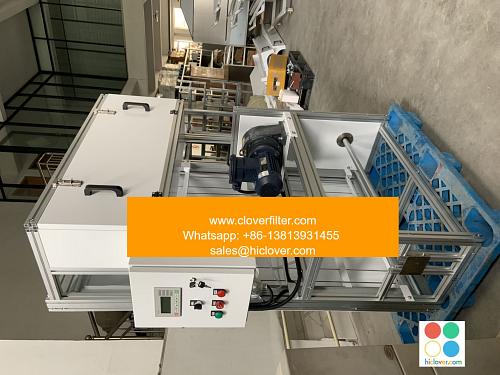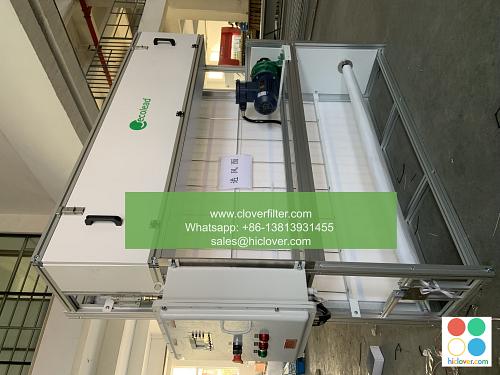Air Purifiers vs. Air Filters: What’s the Difference?

Air Purifiers vs. Air Filters: What’s the Difference?
When it comes to maintaining a healthy and clean indoor environment, both air purifiers and air filters are popular solutions. While they share some similarities, there are key differences between these two technologies that can affect their performance, maintenance, and overall effectiveness. In this article, we’ll delve into the world of air purifiers and air filters, exploring the differences between them and highlighting their various application areas.
What is an Air Filter?
An air filter is a common solution for removing pollutants and allergens from the air. It’s typically a physical barrier that uses a membrane or other material to capture particles, such as dust, pollen, and pet dander. Air filters work by using air circulation to pull air through the filter, which captures the pollutants and clean air is then released.
Types of Air Filters:
- HEPA (High-Efficiency Particulate Air) Filters: These filters are designed to capture 99.97% of particles as small as 0.3 microns, including dust, pollen, and pet dander.
- Activated Carbon Filters: These filters are designed to remove gases, odors, and volatile organic compounds (VOCs) from the air.
- Mechanical Filters: These filters use a combination of fibers and mesh to capture larger particles, such as dust and hair.
- UV (Ultraviolet) Light Purifiers: These purifiers use UV light to inactivate germs, bacteria, and viruses.
- Ozone Generators: These purifiers produce ozone, which is then released into the air to purify and sanitize it.
- Ionizers: These purifiers use ions to attract and neutralize pollutants, making them harmless.
- Scope of Effectiveness: Air filters are designed to capture larger particles, while air purifiers can tackle smaller particles, including germs and bacteria.
- Technology: Air filters use a physical barrier to capture particles, while air purifiers use various technologies, such as UV light, ozone, and ions, to eliminate pollutants.
- Maintenance: Air filters typically require periodic replacement, while air purifiers may require more extensive maintenance, such as cleaning and replacing filters.
- Application Areas: Air filters are commonly used in residential and commercial settings, such as homes, offices, and cars, while air purifiers are often used in hospitals, laboratories, and other environments where high levels of cleanliness are required.
- Home and Office: Both air filters and air purifiers have their place in residential and commercial settings, with air filters being more effective for everyday air quality and air purifiers being more suitable for high-pollution areas or areas with sensitive individuals.
- Health Care: Air purifiers are often used in hospitals, clinics, and medical facilities to reduce the risk of infection and promote a healthy environment.
- Industrial: Air purifiers are used in various industries, such as pharmaceuticals, biotechnology, and aerospace, to ensure a clean and controlled environment.
- Automotive: Air filters are commonly used in vehicles to improve air quality and reduce allergens, while air purifiers are not as commonly used in cars, but can be effective in heavily polluted areas.
What is an Air Purifier?
An air purifier is a device that removes pollutants and allergens from the air, but it goes a step further by also eliminating germs, bacteria, and viruses. Air purifiers use a combination of technologies, including UV light, ozone, and other specialized filters, to not only capture particles but also inactivate living organisms.
Types of Air Purifiers:
Key Differences: Air Purifiers vs. Air Filters
Application Areas:
In conclusion, while air filters and air purifiers share some similarities, they operate on different principles and have distinct advantages and disadvantages. Understanding the differences between these two technologies can help you choose the right solution for your specific needs, whether it’s for residential, commercial, or industrial settings. By selecting the right type of air filter or purifier, you can ensure a healthier and cleaner indoor environment for everyone involved.
I’m happy to help! However, I need a little more information from you. Could you please provide a prompt or ask a question? It can be related to a specific topic, ask for a story, or request a task. I’m here to assist you to the best of my abilities.
If you’re not sure what to ask, here are some ideas to get you started:
* Ask me a question about a specific topic, such as science, history, or technology.
* Request a story or joke on a particular theme, like superheroes or animals.
* Ask me to help you with a creative task, such as writing a poem or coming up with a story idea.
* Play a game with me, like 20 Questions or Hangman.
* Discuss a specific topic, such as current events, pop culture, or personal experiences.
Let me know what’s on your mind, and I’ll do my best to assist you!


